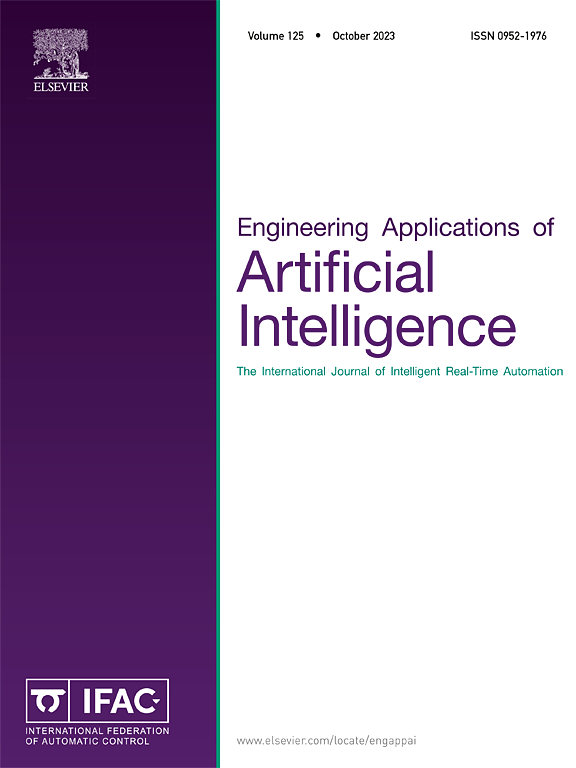Adaptive metagraph neural network assisted by metagraph search for financial fraud detection
IF 7.5
2区 计算机科学
Q1 AUTOMATION & CONTROL SYSTEMS
Engineering Applications of Artificial Intelligence
Pub Date : 2025-04-28
DOI:10.1016/j.engappai.2025.110807
引用次数: 0
Abstract
Financial transaction fraud detection is a critical technology for ensuring the security and stability of financial markets. Artificial intelligence, particularly graph neural networks, has demonstrated superior performance in fraud detection. However, challenges remain, such as limited interpretability, difficulty in adapting to new types of fraud in a timely manner, and incomplete data mining. To address these challenges, we propose a novel graph neural network model called Metagraph Fraud Detection Graph Neural Networks (MetaFraud-GNN), which leverages metagraph search and neural architecture search (NAS) techniques to automatically optimize the network structure for financial transaction fraud detection. MetaFraud-GNN extracts complex patterns from financial transaction networks through metagraph search algorithms, a technique that automatically mines key subgraph patterns. These metagraph capture fraudulent patterns and enable the model to more comprehensively uncover hidden information within transaction data, thus enhancing its processing efficiency. Additionally, the metagraph decoding algorithm optimizes the graph neural network structure by training on the most effective metagraph to adapt to evolving fraudulent methods. This approach improves both the accuracy and adaptability of fraud detection. We conduct experiments on three real-world public benchmark datasets YelpChi, Amazon, and Elliptic and demonstrate that our model significantly outperforms existing benchmark methods on various performance metrics. Such as F1-macro, Area Under the Receiver Operating Characteristic Curve(AUC) and Geometric Mean(GMean), by 4.46%, 2.67%, and 8.59% on YelpChi, 0.14% and 2.19% on Amazon,The F1 indicator has not been upgraded, respectively.
基于元图搜索的自适应元图神经网络用于金融欺诈检测
金融交易欺诈检测是保障金融市场安全稳定的关键技术。人工智能,特别是图神经网络,在欺诈检测方面表现出了卓越的性能。然而,挑战仍然存在,例如有限的可解释性,难以及时适应新的欺诈类型,以及不完整的数据挖掘。为了解决这些挑战,我们提出了一种新的图神经网络模型,称为元图欺诈检测图神经网络(MetaFraud-GNN),它利用元图搜索和神经架构搜索(NAS)技术自动优化网络结构,用于金融交易欺诈检测。MetaFraud-GNN通过元图搜索算法(一种自动挖掘关键子图模式的技术)从金融交易网络中提取复杂模式。这些元图捕获欺诈模式,使模型能够更全面地揭示事务数据中的隐藏信息,从而提高其处理效率。此外,元图解码算法通过训练最有效的元图来优化图神经网络结构,以适应不断发展的欺诈方法。这种方法提高了欺诈检测的准确性和适应性。我们在三个真实世界的公共基准测试数据集YelpChi、Amazon和Elliptic上进行了实验,并证明我们的模型在各种性能指标上明显优于现有的基准测试方法。F1-macro、Area Under Receiver Operating Characteristic Curve(AUC)、Geometric Mean(GMean)等指标在YelpChi上分别下降4.46%、2.67%、8.59%,在Amazon上分别下降0.14%、2.19%,F1指标尚未升级。
本文章由计算机程序翻译,如有差异,请以英文原文为准。
求助全文
约1分钟内获得全文
求助全文
来源期刊

Engineering Applications of Artificial Intelligence
工程技术-工程:电子与电气
CiteScore
9.60
自引率
10.00%
发文量
505
审稿时长
68 days
期刊介绍:
Artificial Intelligence (AI) is pivotal in driving the fourth industrial revolution, witnessing remarkable advancements across various machine learning methodologies. AI techniques have become indispensable tools for practicing engineers, enabling them to tackle previously insurmountable challenges. Engineering Applications of Artificial Intelligence serves as a global platform for the swift dissemination of research elucidating the practical application of AI methods across all engineering disciplines. Submitted papers are expected to present novel aspects of AI utilized in real-world engineering applications, validated using publicly available datasets to ensure the replicability of research outcomes. Join us in exploring the transformative potential of AI in engineering.
 求助内容:
求助内容: 应助结果提醒方式:
应助结果提醒方式:


